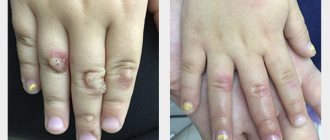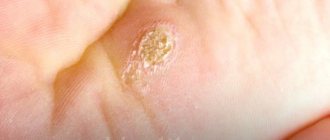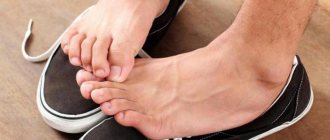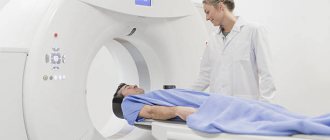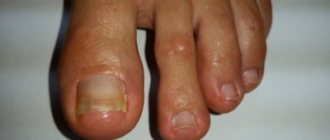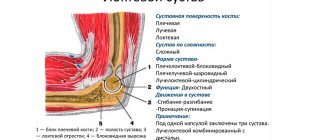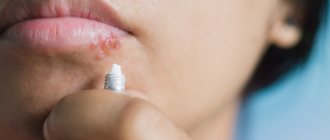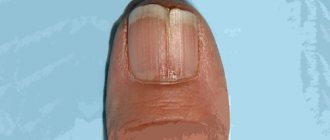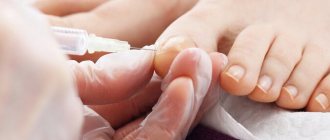Bumps on the toes are a manifestation of various diseases and complex deformities of the foot. Despite the common features of all these “bumps”—something begins to bulge on a finger or foot—the reasons for the appearance of “bumps” are completely different, and accordingly, their treatment is completely different.
Regardless of the etiology, all “bumps” cause a cosmetic defect, cause pain, and interfere with wearing shoes.
For some bunions, conservative treatment methods are sufficient and surgical treatment is not required. In others, surgical treatment methods are the only solution to the problem.
The effectiveness of treatment depends on the accuracy of diagnosis and the choice of the correct treatment method. Incorrect diagnosis and treatment methods can only guarantee the loss of your time and money, and sometimes your health.
Familiarize yourself with the different types of lumps and some of the diseases that can cause them to form.
Lumps in the area of the first metatarsophalangeal joint, formed by osteophytes.
Hallux valgus
| A. Appearance of the foot | b. corns on the sole of the foot | |
This is the most common cause of a lump. It is accompanied by drooping of the arches of the feet. A bunion with hallux valgus has the following features:
- hard, immobile, increases in size slowly;
- a rapid increase in the size of the bone is associated with the development of bursitis;
- located at the base of the first finger;
- the first finger is deviated outward;
- Calluses (corns) may form on the sole of the foot;
- Deformation of the 2nd finger is often observed.
Arthrosis of the first metatarsophalangeal joint
Bone growths form along the perimeter of the articular surfaces of the first metatarsal bone and the base of the proximal phalanx of the first finger.
- the “bone” is formed mostly in the area of the head of the first metatarsal bone on the back of the foot, but osteophytes can be along the entire perimeter of the joint;
- The first metatarsophalangeal joint is mainly deformed in isolation.
- first of all, movements in the joint are limited, and in the future they may be completely absent;
- patients feel severe pain, which becomes constant over time.
| A. side view of the foot | b. top view of the foot |
| V. x-ray of the foot | d. joint changes |
| “Lump” with arthrosis of the metatarsophalangeal joint | |
Malignant growths
These reasons are extremely rare, but they should not be ruled out at all. Malignant tumors can form from any structure - bones, blood vessels, muscles, cartilage, ligaments. In the first stages, the growth of malignant tumors is very slow.
Then some provoking factor appears, and the tumor begins to progress rapidly. A growth on one toe quickly spreads to the entire phalanx, and this is far from the limit. Consultation, diagnosis and treatment of such patients should be carried out only together with an oncologist.
Soft tissue lumps in the area of the first metatarsophalangeal joint
Characteristic features: soft, mobile, painful, warm to the touch, can quickly increase in size.
Bursitis of the mucous membrane of the metatarsophalangeal joint
Most often, this disease appears when there are bone growths in the area of the first metatarsophalangeal joint. Sometimes it can develop independently, for example, when, when wearing tight shoes, the mucous membrane is chronically injured and rubs against the shoes.
- a swelling appears on the inside of the foot at the base of the first toe;
- appears suddenly, quickly increases in size;
- there is redness of the skin in the area of the bump, it is often hot to the touch, painful, soft;
- sometimes the liquid in it is detected;
- Conservative treatment is effective and quickly gives good results.
| Bursitis in combination with hallux valgus and Taylor deformity, hammertoe deformity of the second finger |
Arthritis of the first metatarsophalangeal joint
In arthritis, a “bump” is formed due to inflamed soft tissues, swelling, and an increase in the amount of synovial fluid. The most common causes of arthritis are gout, infectious diseases (reactive arthritis), and systemic diseases (rheumatoid arthritis). Characteristic symptoms of a “bump” in arthritis:
- the skin at the base of the first finger is red, swelling is located along the entire perimeter of the joint, often very painful;
- it is soft, hot to the touch, and can be very painful;
- in some cases, general body temperature increases;
- conservative treatment methods are effective and quickly give positive results;
- The choice of treatment method depends on the causes of arthritis.
| Acute arthritis of the first metatarsophalangeal joint | ||
Keratomas
Keratoma is a benign neoplasm on the skin; it appears as a result of an imbalance in the constant renewal of skin epithelial cells. For some reason, the epidermis cannot independently get rid of old dead cells, but new ones have already been formed. Because it is made up of keratinocyte cells (the normal cells that make up skin), it is considered benign.
Such pathological processes are observed most often on the extremities, and therefore they can often be found on the toes. In approximately 8–20% of all cases, keratomas turn into cancer. How to diagnose keratoma yourself? At the initial stage, it looks like a slightly protruding spot of coffee or gray color.
If you touch it, you will notice that it is rough. Gradually, the elevation above the rest of the skin begins to increase, and now the growth is already visible to the naked eye. If the keratome rises too much, there is a danger of injury, which will lead to bleeding and pain.
Experts believe that keratomas on the fingers can be considered safe if they are in a stable condition. If a person notices their increase, darkening of color or bleeding for no reason, then an urgent need to consult a doctor. Removal of keratomas is carried out in different ways: radio waves, laser, liquid nitrogen, acids, electrocoagulation or the standard scalpel.
If there is a suspicion that an oncological process is occurring inside the keratoma, it can be removed only by radio waves, laser or traditional surgery. The remaining methods are considered weaker, gentler, and therefore, after using them, a person may subsequently experience rapid growth of cancer cells in this area. That is, the therapy itself will provoke the development of cancer.
Bumps on 2-4 toes
Bunions on the 2nd to 4th toes are the result of hammertoes, claw toes, and mallet toes. Distinctive features:
- it is always formed by the head of the proximal or distal phalanx of the finger and bone growths. Sometimes the volume of the “bone” increases due to inflammation of the soft tissues;
- it is always located on the dorsum of the finger in the area of the proximal or distal interphalangeal joints;
| Hammertoe deformity, top and side view of the foot |
Medical treatment of calluses
Popular methods of treating calluses and corns in the bone area:
- A special patch with salicylic acid is effective for removing corns near the nail. Corns disappear in the area of the bone even in a child. Before applying the treatment patch, take a steam bath for your toes.
- To soften the stratum corneum, use kerotolic cream or gel. Use until the problem disappears completely.
- Salons offer to get rid of calluses using a drill. You can perform the procedures without fear, even in the area of the bone.
Anti-callus ointment - Today there are many ointments that treat calluses.
- Dry calluses on the feet and fingers near the bone, near the nail, which hurt very much, “burn”, are removed using laser therapy. The method is in demand, it is done easily and quickly.
Treatment is also carried out with folk remedies, using aloe, lemon, mashed potato compress, soda baths. Regular procedures have an effect even in a child.
Taylor (tailor) deformation
Taylor deformity is characterized by varus deviation of the fifth toe and valgus deviation of the fifth metatarsal bone.
Characteristic signs of a “bump” on the foot:
- located at the base of the little finger;
- the fifth finger is deflected inwards, in some cases also upwards;
| “Bone” in Taylor deformity in combination with bursitis |
- The “bump” sharply increases in size and becomes painful when bursitis of the mucous bursa of the fifth metatarsophalangeal joint develops.
| “Bumps” and x-ray of the foot with Taylor deformity |
Arthrosis of the tarsal joints
Tarsal joints form between the bones of the midfoot. The midfoot constantly endures heavy loads during walking and running and is injured (microtrauma).
In this case, the articular surfaces are damaged, the cartilage becomes thinner, and over time osteophytes (bone growths) appear - arthrosis develops.
Characteristic symptoms:
- these “bones” are hard, often painful, and can increase in size due to inflammation of the soft tissues;
- they appear on the dorsal surface in the area of the instep of the foot;
- Walking in tight shoes can be very painful.
| A. Osteophytes in arthrosis of the metatarsocuneiform joint | A. Lump due to arthrosis of the metatarsocuneiform joint |
Treatment of warts
Warts are treated in three ways:
- Treatment with medications;
- Treatment with folk remedies;
- Removal on the legs using modern surgery and cosmetology methods.
It is worth noting that the first two methods are lengthy and require strength and patience in the fight if formations appear in the area of the bone.
Wart on finger
Modern pharmaceutical companies offer drugs that help treat warts. They affect the painful lesion differently. Preparations with a cold effect on the lesion, agents that eliminate warts using chemical components, antiviral drugs that act directly on the virus. If treatment is required for a child, it is better to go to a dermatologist.
Warts can also be treated with folk remedies. A popular method is to apply the juice of plants around the hearth - mountain ash, aloe, celandine, garlic. Infusions help get rid of painful tubercles.
In the latter case, painful warts are removed in a specialized clinic using two methods:
- Cold removal with liquid nitrogen;
- Laser exposure.
Hygroma of the foot
Hygroma is a “hernia” of the joint capsule or tendon sheath. A bulge can form on the dorsum of the foot from the ankle to the toes.
Features of hygroma on the foot:
- Forms on the dorsum of the foot. Hygromas on the plantar surface of the foot are rather an exception.
- At the beginning of its occurrence, it periodically appears and disappears, then becomes constant.
- Painless, dense or soft-elastic consistency, often mobile.
- When rubbing with shoes, signs of inflammation may appear: redness, pain, swelling.
- When wearing tight shoes it causes discomfort and pain.
| Appearance of the foot with hygromas |
Fighting methods
Treatment for Morton's neuroma between the toes, which resembles a cushion, is carried out in two ways:
- Conservative treatment. It is performed when Morton's neuroma does not change or cause pain. Procedures and measures are aimed primarily at relieving pressure on the nerve between the toes. Shoes are changed to comfortable ones, and a number of medications are prescribed. Nerves in the foot are treated with courses of injections of corticosteroids and analgesics. Treatment is complemented by regular courses of physical therapy to help cure Morton's disease more quickly.
- Surgical treatment. Surgery is performed if conservative treatment has failed. Removal and dissection of Morton's neuroma is performed under local anesthesia. After the operation, it seems that the legs and fingers are more numb, this will gradually pass. Rehabilitation takes up to two weeks, and over time the legs become less likely to go numb.
Morton's neuroma is a serious disease that occurs more often in women, but today it is diagnosed even in a child.
In conclusion, I would like to say that it is important to monitor the condition of your feet. A tubercle, pain on the fingers, soles of the feet means a serious illness. There is no need for self-medication. The doctor will establish a clear diagnosis and determine treatment measures. Legs are the key to health.
Gouty tophi
Gout is a disease associated with impaired purine metabolism. Tophi in gout are deposits of uric acid salts in tissues.
- Men are more likely to suffer from gout, and the main reason for visiting an orthopedist is tophi;
- The location of the tophi varies greatly: from the toes to the auricles.
- their size varies - from a few millimeters to gigantic sizes;
- tophi tumors are dense and painless;
- with chronic injury from shoes, they can become inflamed, infected and suppurate;
- when the tophi are opened, a white mass (urate crystals) is released from them;
- 15-20% of patients with gout are carriers of urate stones.
| Appearance of the foot with gouty tophi |
Treatment tactics:
- After conservative therapy and stabilization of uricemia levels, removal of tophi is indicated.
- It is preferable to perform operations for small sizes of tophi tumors, without waiting for their growth or purulent fistulous complications.
- The operations are local plastic in nature and are individual depending on the size and location of the tophi.
Modern removal methods
Modern medicine offers treatment options:
- Laser removal. A popular method, the effect on formations does not damage other tissues and joints. The treatment is painless. For a child, this is an ideal removal option.
- Cauterization with liquid nitrogen is used less often, after which the leg and fingers hurt, and the joints seem to ache. The centers of the disease are burning.
- At the initial stages, until the tubercle has penetrated the deep layers of tissue with threads, the spines are removed using thermocoagulation, which involves exposure to high-frequency currents.
You can try to remove the formations using folk remedies, which do not always give results. If after a week of home treatments you do not feel any results or the pain intensifies, you should urgently go to a dermatologist.
